Away from the glitters and bristles of Hyderabad Metropolis, in the middle of green trees and dense vegetation, situated one of the most magnificent fortress complexes of India, Golkonda Fort, once famous for its powerful Muslim Sultanate, flourishing Diamond trade and excellent Engineering skills of ancient time. This is one of the largest mud fort of India, built on a granite hill.
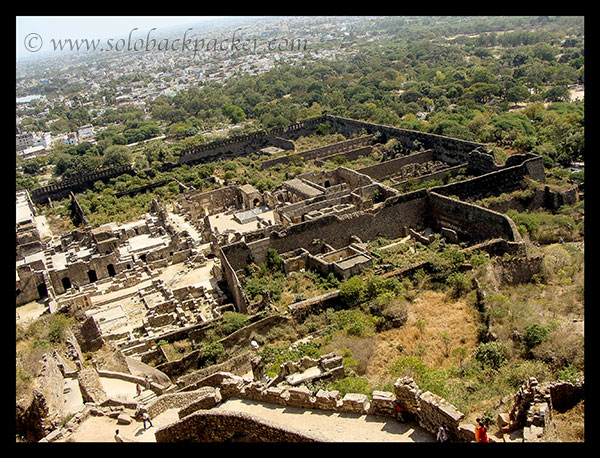
The name Golkonda represents the Telugu Word Golla Konda meaning the Shepherd’s Hill (Golla: Shephed; Konda: Hill). It is believed that in 1143, a shepherd boy came across an idol on the top of this local hill Mangalvaram and informed it to the Kakatiya King, who was the ruler that time. The fort was originally built by Kakatiya rulers, but in 16th century Qutub Shahi Sultans expanded it to its glory. At the height of its glory, this mud fort was extending around 5 km in circumference with 7 kms outer wall enclosing this city and served as the capital of Qutub Shahi Dynasty until 1590 when the capital was moved to Hyderabad.
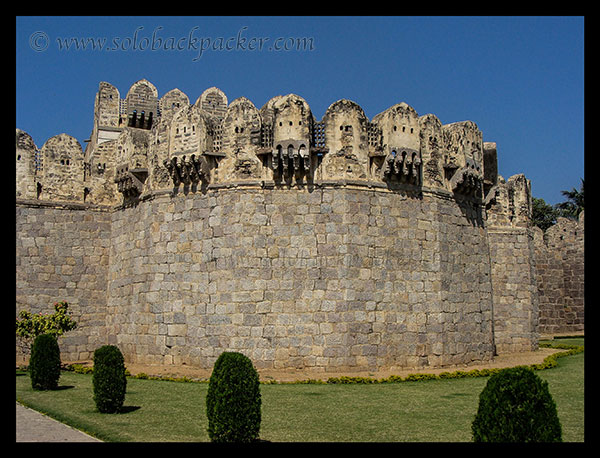
During my stay in Hyderabad, one day I went to explore the decaying glory of this mighty fort and its ruins. Golkonda Fort is easily accessible from all part of Hyderabad City. I stayed in Begumpet, so boarded a bus to Secundarabad Railway Station and from there used Bus No. 5C to reach in front of the Golkonda Fort. Golkonda Fort remains open from 9.00 AM to 5.00 PM throughout the year except on Monday. Ticket counter is just outside the main gate and it costs INR 10 for Indians and INR 100 for Foreign Nationals. No charge for the digital still cameras, and INR 25 for video cameras.
After buying my entry ticket, I moved towards the main gate when a mob of local guides approached me. The fort is large enough to hire a guide at the cost of INR 250-400 approx. The price quoted by them is very high, but you can try to negotiate for the best price. I believe in having a prior idea of any historical destination, then try a self-exploration, click lot of pictures at my pace and then search for the detailed history and geography on the web, so I did not hire any guide.
I reached to the main entrance of the fort known as Bala Hissar Gate. This nicely decorated entrance gate itself give you an idea of the grandeur of this fort.
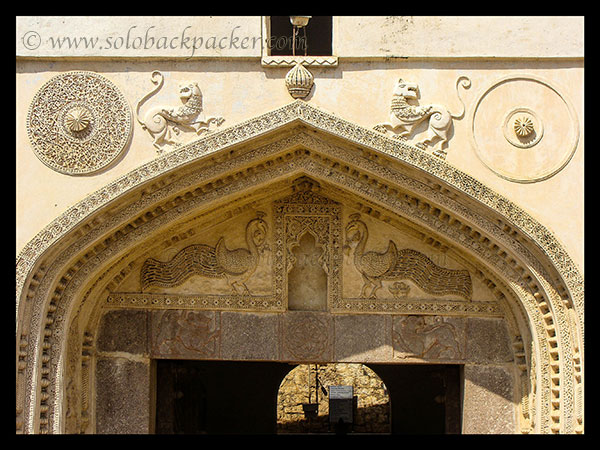
Just opposite to the Balaissar Gate, there is a Curtain Wall. This wall circumference the main gate in such a manner that enemy coudn’t get the enough space to break the main gate through the use of heavy equipments or the elephants. The original curtain wall was however destroyed by Aurangzeb, and the present wall is erected much later in 20th century.
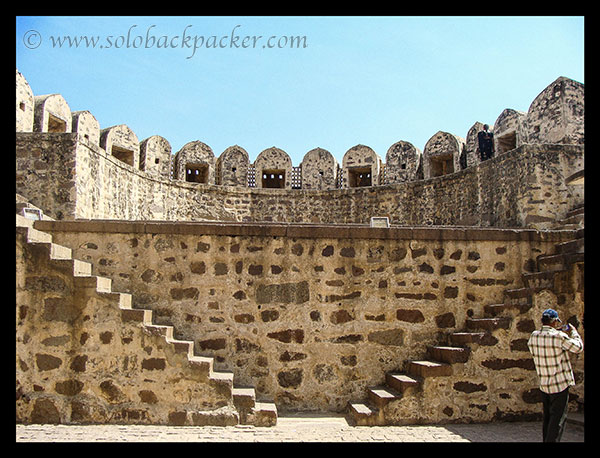
The fort is an example of architecture excellence. Its old days acoustic system was an excellent setting for conveying the messages from one point to another. This was so perfect that if you clap at the base near main entrance, one can hear that sound at the Baradari (Balaissar) nearly one kilometer away on the top. This sound system was used like the Morse Code to convey any message from the main gate to citadel.
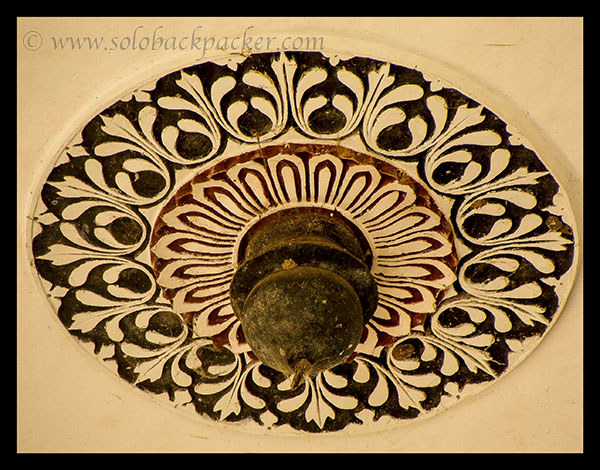
After crossing the main entrance, I got the first view of this mighty fort. Wall after wall and structure after structure on a hill gives an amazing look to the whole site.
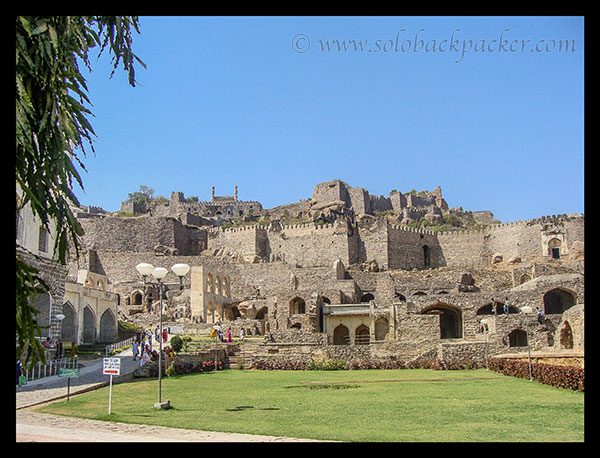
Moving further, I passed through the beautiful Nagin Bagh and climbed on the steps leading to the top of the fort. These steps require good physical stamina to reach on the top in a hot weather. Do not forget your water bottle. After climbing some steps, I passed through another wall of the fort and some old, but now damaged tanks containing dirty water. Steps are still visible and leading to the bottom of the tank.
This fort was also famous for its excellent water engineering. They had a very elaborate and efficient water supply system to ensure the continuous water supply in the fort.
Further, I reached to a room, a cell, which is known as Ramdas’ Bandigriha (Prison). Ramdas was the treasurer of Sultan Abul Hasan. He was arrested and kept in this cell for misusing the public funds. However, later those charges proved to be false and he was released. Ramdas, a Hindu devotee, was also the founder of a Hindu Temple. Many hand made idols of Hindu Gods are still kept on the wall of the room, where thousands of visitors gathered at the occasion of Ram Navami to offer their prayers.
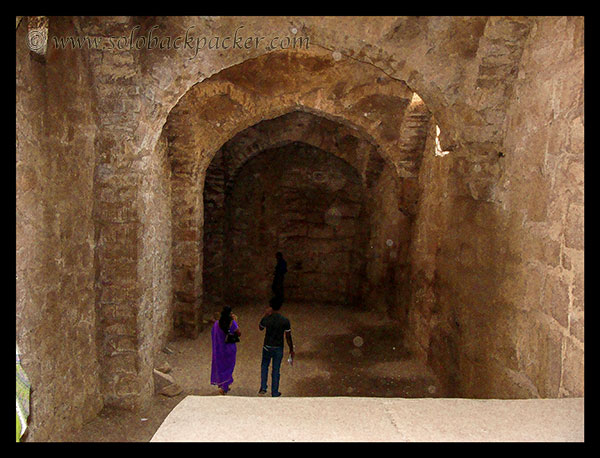
Further, I reached to Qutub Shahi Mosque. This mosque was built by Sultan Ibrahim Qutub Shahi between 1550-1580, and believe to be the one of the oldest structure in this fort complex.
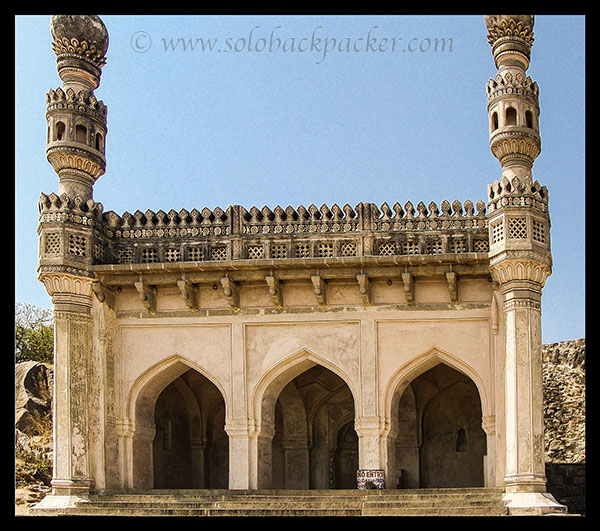
Moving further, I reached to the Jagdamba Maa Temple dedicated to Hindu Goddess ” Kali”. This temple is very scared among the Hindu devotees and it is the beginning point of Bonalu, a Hindu Festival, in the month of Ashadha (July/August).
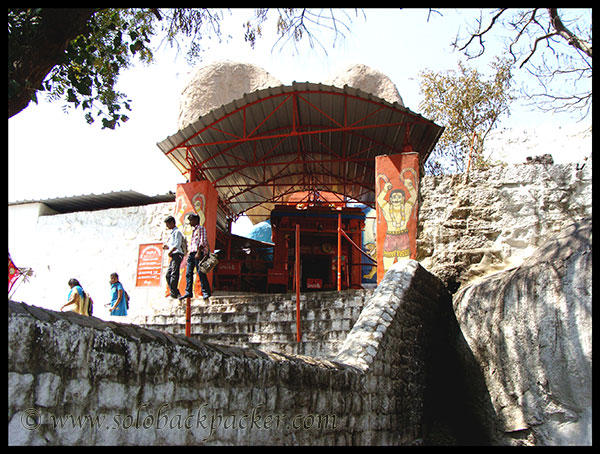
On the top of the Kali Temple, there are two wonderful giant rocks. These rocks are also known as Sister Rocks.
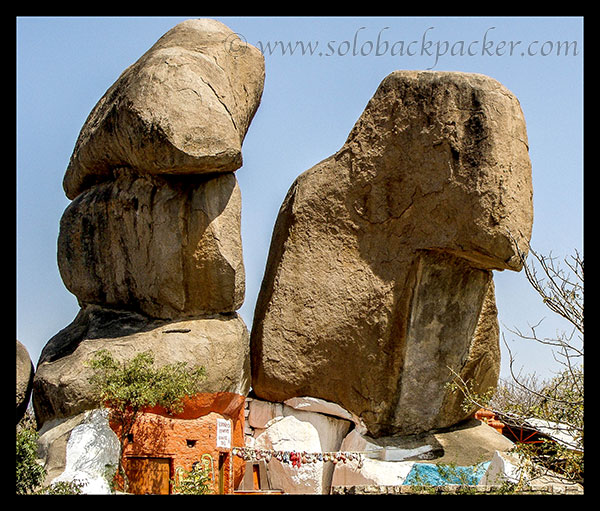
Adjacent to the temple, there is a two-storey building, the citadel, known as Baradari(Balaissar). From the open terraced on its top, the king enjoyed the beautiful views of surrounding countryside. I also enjoyed the amazing view around the Golkonda Fort from the top.
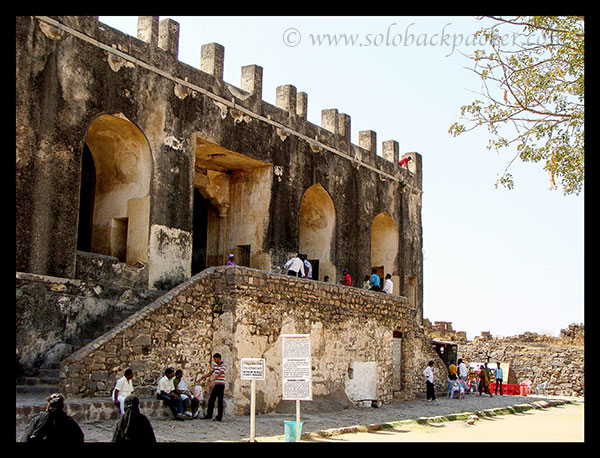
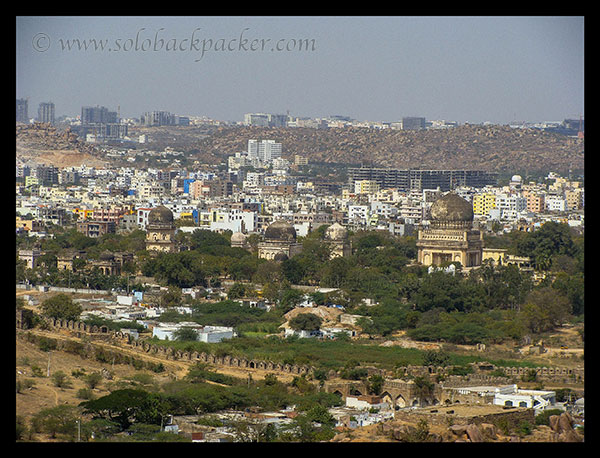
After spending some time at the top, I started descending from the hill through a different route. Reaching on the ground, I reached to a grand open theater of ruins with many lighting equipments mounted on the wall, where famous Sound and Light Show of Golkonda held every night about 6.30 PM. These shows mainly held in Telugu and Hindi depending on the day of the week. (Mon, Wed, Fri – Telugu Show; Tue, Thu, Sat, Sun – Hindi Show). Entry fee for the show is INR 100 for adult and INR 75 for child in VIP class and INR 50 for adult and INR 30 for child in Non-Executive Class.
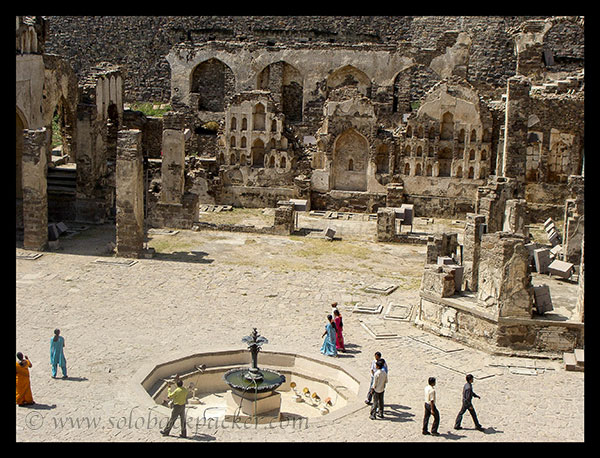
Moving further, I reached to Taramati Mosque. This mosque is situated outside the royal palace and used by the rulers and their nobles of Qutub Shahi Dynasty.
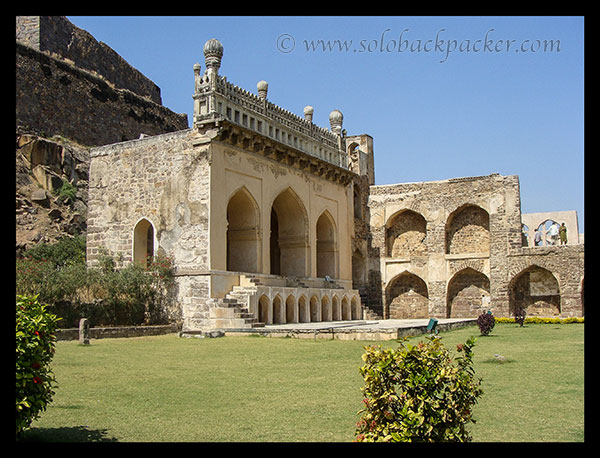
Further, I again reached back to the main entrance of the fort, Balaissar Gate and thus completed the visit to this fort.
This way, A person require at least 3 hours to look around the whole area of the fort. This exploration starts from the main entrance and goes towards the Nagin Bagh, then up on the hill to Kali Temple and Baradari (Balaissar) and then descend back to the venue of sound-light show and finally ends at the main entrance.
At the time of its glory, This fort was also the home for world’s most famous diamonds like Kohinoor and Hope Diamond. The area around the fort was developed in many local bazaars selling diamonds, jewellery and pearls, attracting its customers from all around the world.


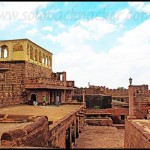
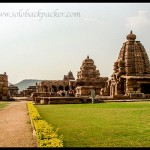
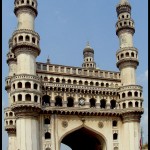
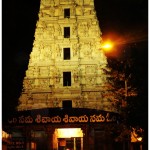

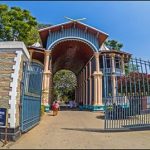
Wonderful shots of the fort.
Golconda .. the might of the Sultanates .. you have made it come alive with your beautiful photographs and well written article. I plan to visit Hyderabad someday and will love to see Golconda 🙂
– Regards
Puru
Awesome post on Golkonda fort!